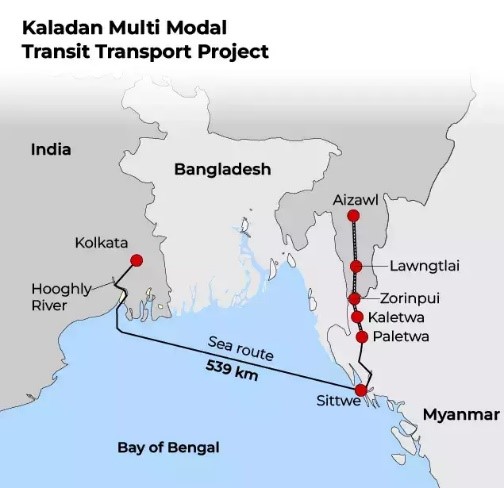20 May 2025 Current Affairs
Sansad Ratna Awards
The Sansad Ratna Awards, inspired by the vision of Dr. APJ Abdul Kalam, wereninstituted in 2010 to recognize outstanding performance by Members of Parliament (MPs) in India.
Purpose and Objective:
- To promote transparency, accountability, and performance in Parliament by recognising topperforming MPs.
- Encourage healthy parliamentary practices and a performance-oriented culture among legislators.
Who Organises It?
- Not a Government award.
- Organised by: Prime Point Foundation, a non-governmental initiative.
- Supported by: Civil society, media, and experts in parliamentary affairs.
Evaluation Criteria for Award:
The jury committee selects MPs based on quantitative and qualitative parameters, including:
- Questions asked in the House
- Private Member’s Bills introduced
- Debates initiated
- Attendance percentage
- Utilisation of MPLADS funds (Member of Parliament Local Area Development Scheme)
- Duration and quality of participation in debates
Jury Committee:
- Composed of eminent Parliamentarians, retired judges, and members of civil society.
- Ensures non-partisan and merit-based selection.
Significance:
- Promotes good governance and effective legislative participation.
- Encourages MPs to be more active and responsible in their legislative duties.
- Raises public awareness about the functioning and performance of their elected representatives.
National Council of Science Museums (NCSM)
NCSM:
- Established: April 4, 1978
- Type: Autonomous Society
- Parent Ministry: Ministry of Culture, Government of India
- Headquarters: Kolkata
Key Objectives:
- To promote scientific awareness and scientific temper among the masses.
- To develop science museums and centres across India, making science accessible and engaging.
Major Functions:
NCSM is responsible for:
- Setting up National level science museums/centres in metropolitan cities.
- Establishing Regional Science Centres in state capitals.
- Launching District Science Centres in district headquarters.
Central Research & Training Laboratory (CRTL):
Located in Kolkata, CRTL serves as:
- A central hub for training, research, and development.
- Offers technical and professional development support for science communication activities.
Collaboration & International Projects:
1. NCSM has played a role in developing science centres or galleries abroad:
- o Rajiv Gandhi Science Centre, Mauritius
- o ‘India’ gallery on Buddhism at the International Buddhist Museum, Sri Lanka
2. It has sent exhibitions to:
- USA, Russia, China, France, Bangladesh, Bhutan, Trinidad and Tobago, Guyana, Bulgaria, etc.
PSLV-C61/EOS-09 Mission
ISRO’s Polar Satellite Launch Vehicle (PSLV-C61) mission failed to place the Earth Observation Satellite-09 (EOS-09) into its intended sun-synchronous polar orbit due to a glitch in the rocket’s third stage.
This was ISRO’s 101st mission and the 63rd using the PSLV. The EOS-09 satellite carried a Synthetic Aperture Radar (SAR) payload designed to capture all-weather Earth images.
Note:
- A sun-synchronous polar orbit (SSO) is a polar orbit where a satellite passes over the same Earth location at the same local solar time each day, maintaining a consistent position relative to the Sun.
Earth Observation Satellite-09 (EOS-09):
- About: EOS-09, also called RISAT-1B, is an advanced Indian remote sensing
- satellite equipped with a C-band Synthetic Aperture Radar (SAR) for all-weather, day-and-night Earth imaging.
- It is designed for diverse applications including land-use mapping, hydrology, disaster management, agriculture, forestry, and coastal security.
Key Features:
- All-weather capability: SAR penetrates clouds, rain, fog, and darkness, ensuring continuous surveillance.
- High resolution: Offers up to 1-meter resolution and wide swath coverage (10 to 225 km).
- Multiple Imaging modes: Supports five modes like High-Resolution Spotlight and Medium Resolution Scan SAR for varied uses.
- Dual-use: Supports both civilian applications and defence surveillance, including monitoring military activity and maritime security.
- Orbit: Intended for a sun-synchronous polar orbit for consistent daily coverage.
Presidential Reference
A Presidential Reference refers to the mechanism provided under Article 143 of the Indian Constitution, which allows the President of India to seek the advisory opinion of the Supreme Court on questions of law or fact of public importance. This is part of the advisory jurisdiction of the Supreme Court and is distinct from its appellate or original jurisdiction.
Article 143: Constitutional Provision
Article 143 – Power of the President to consult the Supreme Court – has two clauses:
1. Article 143(1):
- The President may refer to the Supreme Court any question of law or fact that is of public importance.
- The Court may give its opinion after such hearing as it thinks fit.
- The opinion is not binding but carries persuasive value.
2. Article 143(2):
- For disputes arising out of pre-Constitution treaties or agreements, the President shall refer them to the Court for its opinion.
Note: These references are made by the President on the advice of the Council of Ministers, reflecting the executive's collective decision.
Nature of Supreme Court’s Opinion Under Article 143
- Not binding, unlike regular judgments.
- No precedential value, but high persuasive authority.
- Discretionary: The SC can refuse to answer if:
- The question is vague
- It infringes upon parliamentary privilege
- It seeks a review of prior rulings
- Must be heard by a minimum 5-judge Bench as per Article 145.
Current Reference by President Droupadi Murmu (2024)
Context: Following a Supreme Court judgment that fixed timelines for the President and Governors to act on Bills and allowed judicial review of their inaction.
1. Key Issues Referred:
- Whether the Supreme Court can:
- Prescribe timelines when the Constitution is silent?
- Make the actions of the President/Governors justiciable before assent is granted?
- Whether Article 142 (SC’s power to do complete justice) can be used to impose such directions?
- Interpretation of Articles 200 and 201 (relating to Governor’s powers over State Bills).
International Monetary Fund (IMF) approved a $1bn (£756m) bailout to Pakistan
IMF Bailouts:
- Bailout: Bailout is a general term for extending financial support to a company/country facing a potential bankruptcy threat.
- It can take the form of loans, cash, bonds, or stock purchases.
- A bailout may (not) require reimbursement but is often accompanied by greater oversight and regulations.
- IMF Bailouts: Countries seek help from the IMF usually when their economies face a major macroeconomic risk, mostly currency crisis (such as the ones Sri Lanka is facing).
- Countries seek such assistance from the IMF to meet their external debt and other obligations, to purchase essential imports, and to prop up the exchange value of their currencies.
Note:
1. A currency crisis is generally a consequence of:
- Gross mismanagement of currency by a nation’s central bank (often pressured by the ruling govt. to create fresh money for populist spending).
- Consequent rapid rise of the overall money supply, which in turn causes rise in prices and drop in exchange value of the currency.
2. A currency crisis results in:
- Lack of confidence in said currency
- Disruption of economic activity (people become hesitant to accept the currency in exchange for goods & services)
- Reluctance among foreigners to invest in such an economy.
IMF Bailout Provided
1. Procedure:
- The IMF lends money to the troubled economies often in the form of Special Drawing Rights (SDRs).
- SDRs simply represent a basket of five currencies, namely the U.S. dollar, the euro, the Chinese yuan, the Japanese yen, and the British pound.
- This lending is carried out by a number of lending programs such as extended credit facility, flexible credit line, stand-by agreements, etc.
- Countries receiving the bailout can use the SDRs for various purposes depending on their individual circumstances.
2. Conditions:
- A country may have to agree to implement certain structural reforms as a condition to receive IMF loans.
3. Criticism of Lending Conditions:
- Believed to be too tough on the public
- Often accused of being influenced by international politics
- Free-market supporters criticise the IMF for being too interventionist
International Monetary Fund (IMF)
- The IMF was created at the 1944 Bretton Woods Conference
- Est. – 27 December 1945
- HQ – Washington, D.C., United States
- Members – 190 countries( Last country- Andorra)
- Managing Director - Kristalina Georgieva(Bulgaria)
- First Deputy Managing Director- Gita Gopinath (Indian American economist)
- First :- Camille Gutt (Belgium)
Kaladan Multi-Modal Transit Transport Project

Context
- Prime Minister, Narendra Modi has hailed the inaugural run of the vessel from Syama Prasad Mookerjee Port to Sittwe Port Myanmar developed under Kaladan Multi-Modal Transit Transport Project.
Background
- The Kaladan Multi-Modal Transit Transport Project was jointly identified by India and Myanmar to create a multi-modal mode of transport for the shipment of cargo from the eastern ports of India to Myanmar as well as to the North-Eastern part of India through Myanmar.
About
- The Kaladan Road Project connects the eastern Indian seaport of Kolkata with Sittwe seaport in Rakhine State, Myanmar by sea.
- In Myanmar, it will then link Sittwe seaport to Paletwa in Chin State via the Kaladan river boat route, and then from Paletwa by road to Mizoram state in Northeast India.
- Paletwa is less than 20 km from the Bangladesh border.
| Stretch | Mode | Distance |
|---|---|---|
| Kolkata to Sittwe port in Myanmar | Shipping | 539 km |
| Sittwe to Paletwa (River Kaladan) | Inland Water Transport (IWT) | 158 km |
| Paletwa to Indo-Myanmar Border (in Myanmar) | Road | 110 km |
| Border to NH.54 (Lawngtlai) (in India) | Road | 100 km |
Significance of the Project
- This project will reduce the distance from Kolkata to Sittwe by approximately 1,328 km.
- It will reduce the need to transport goods through the narrow Siliguri corridor, also known as Chicken's Neck.
- It also provides a strategic link to the North-East, thereby reducing pressure on the Siliguri Corridor.
- This project, which will connect Sittwe Port in Myanmar to the India-Myanmar border, is expected to contribute to the economic development of the North-Eastern States of India, by opening up the sea route for the products.
- It was necessary to strengthen land connectivity and integrate the economic development on the Northeast with that of Bangladesh and Myanmar.
- Such linkages would also increase India’s strategic footprints in East Asia and more importantly in our immediate neighborhood.

- Related Articles
-
15,Dec 2025
-
15,Dec 2025
-
12,Dec 2025
-
11,Dec 2025
-
10,Dec 2025
-
09,Dec 2025
-
08,Dec 2025
-
08,Dec 2025



 Download as PDF
Download as PDF
